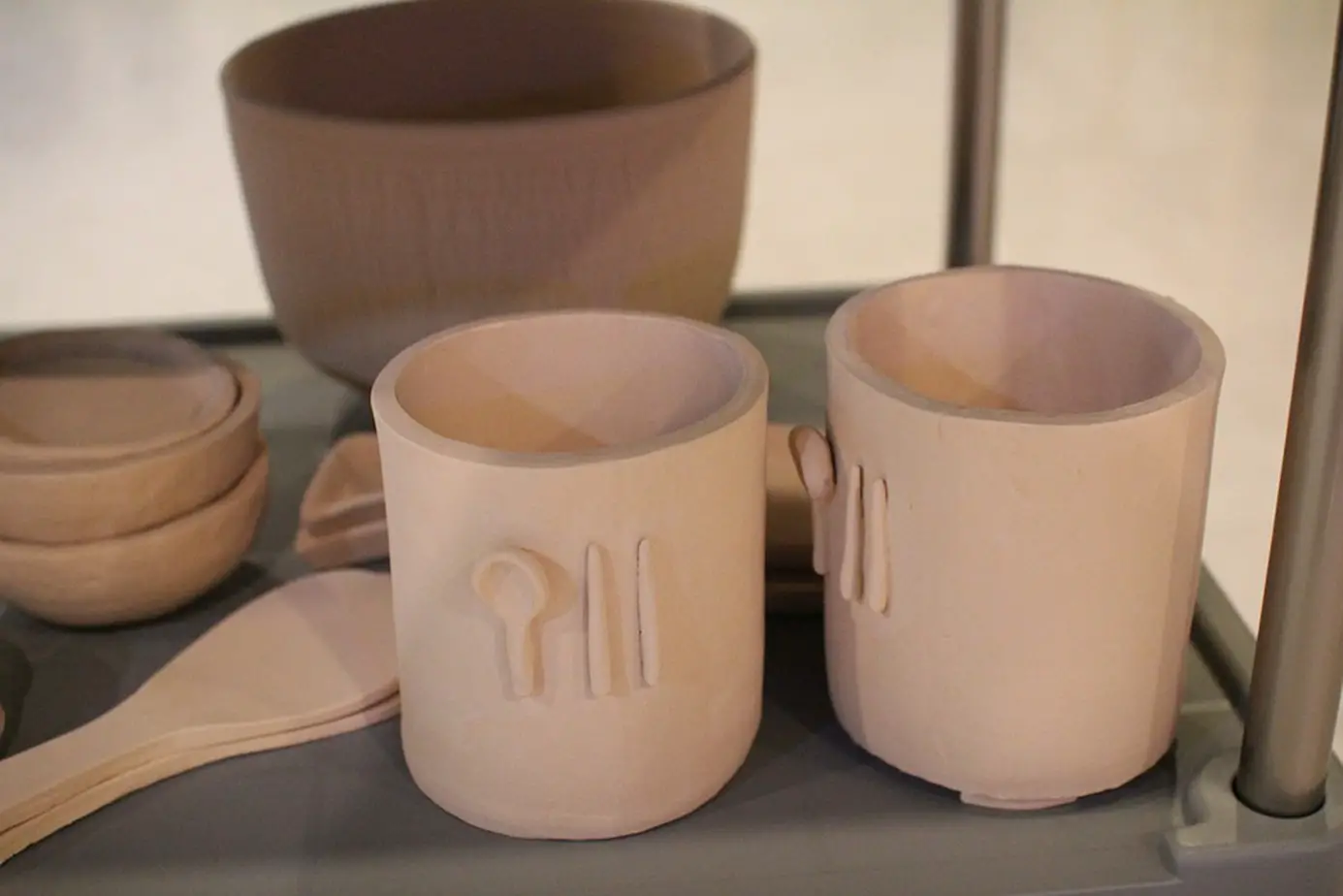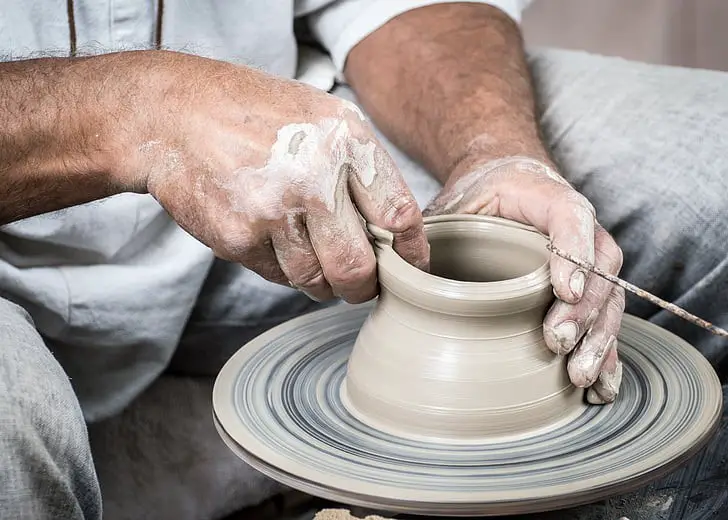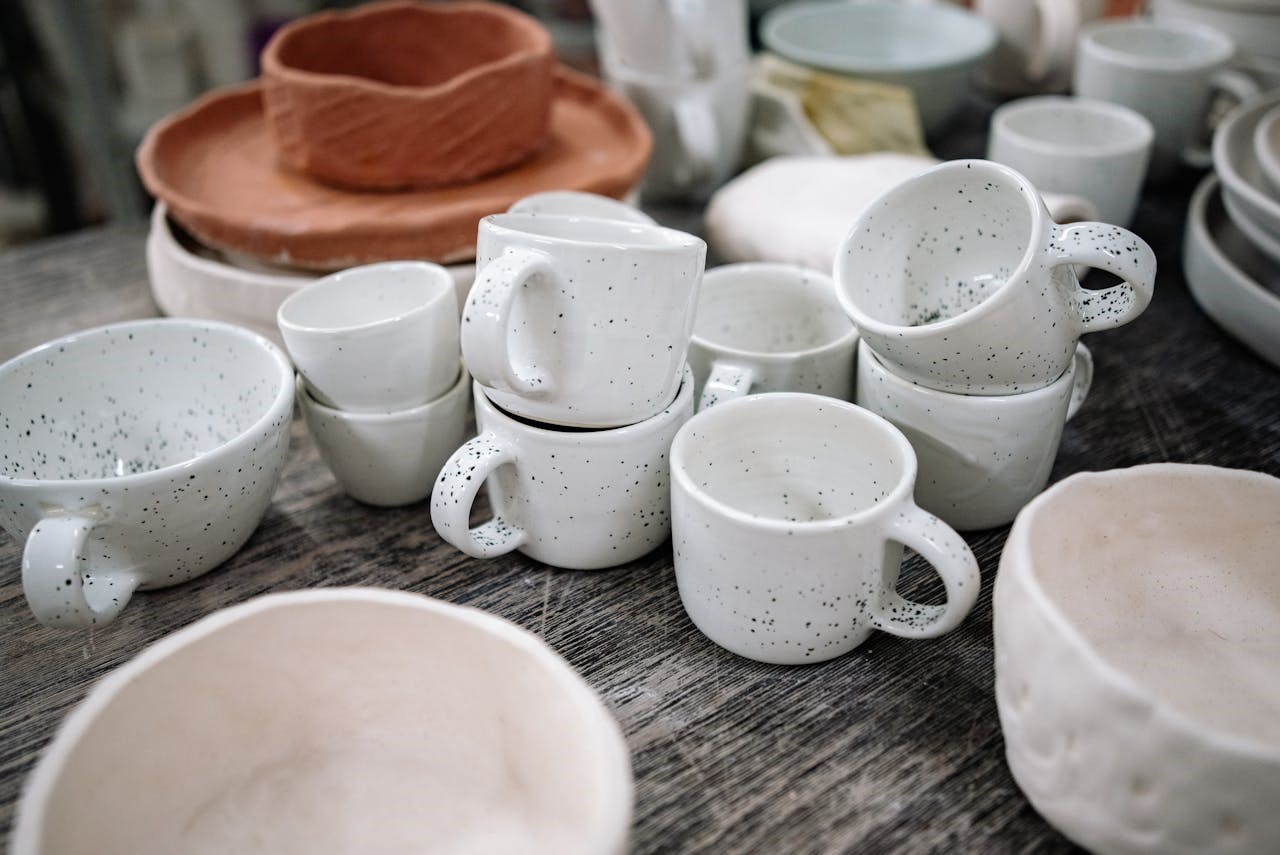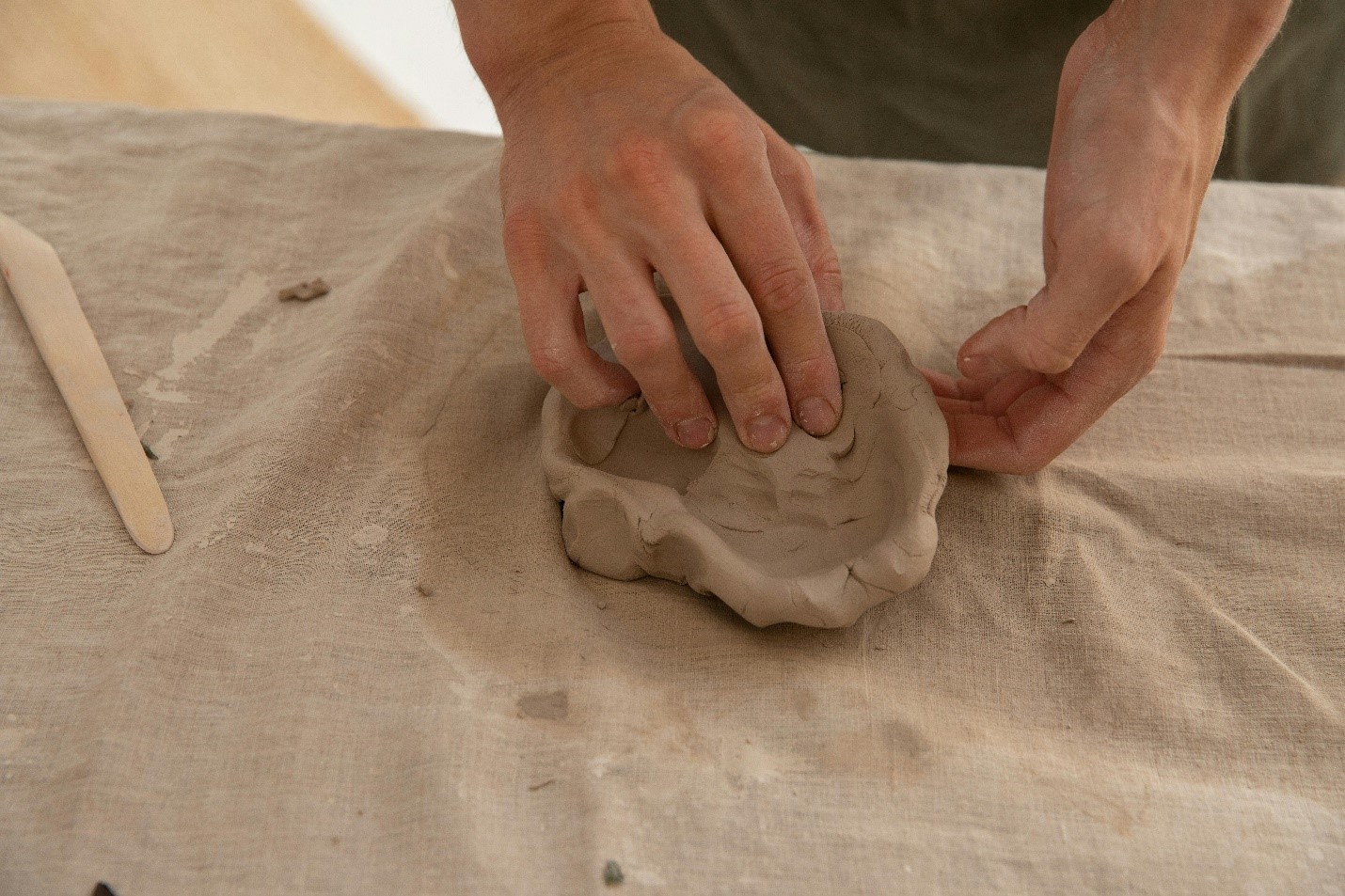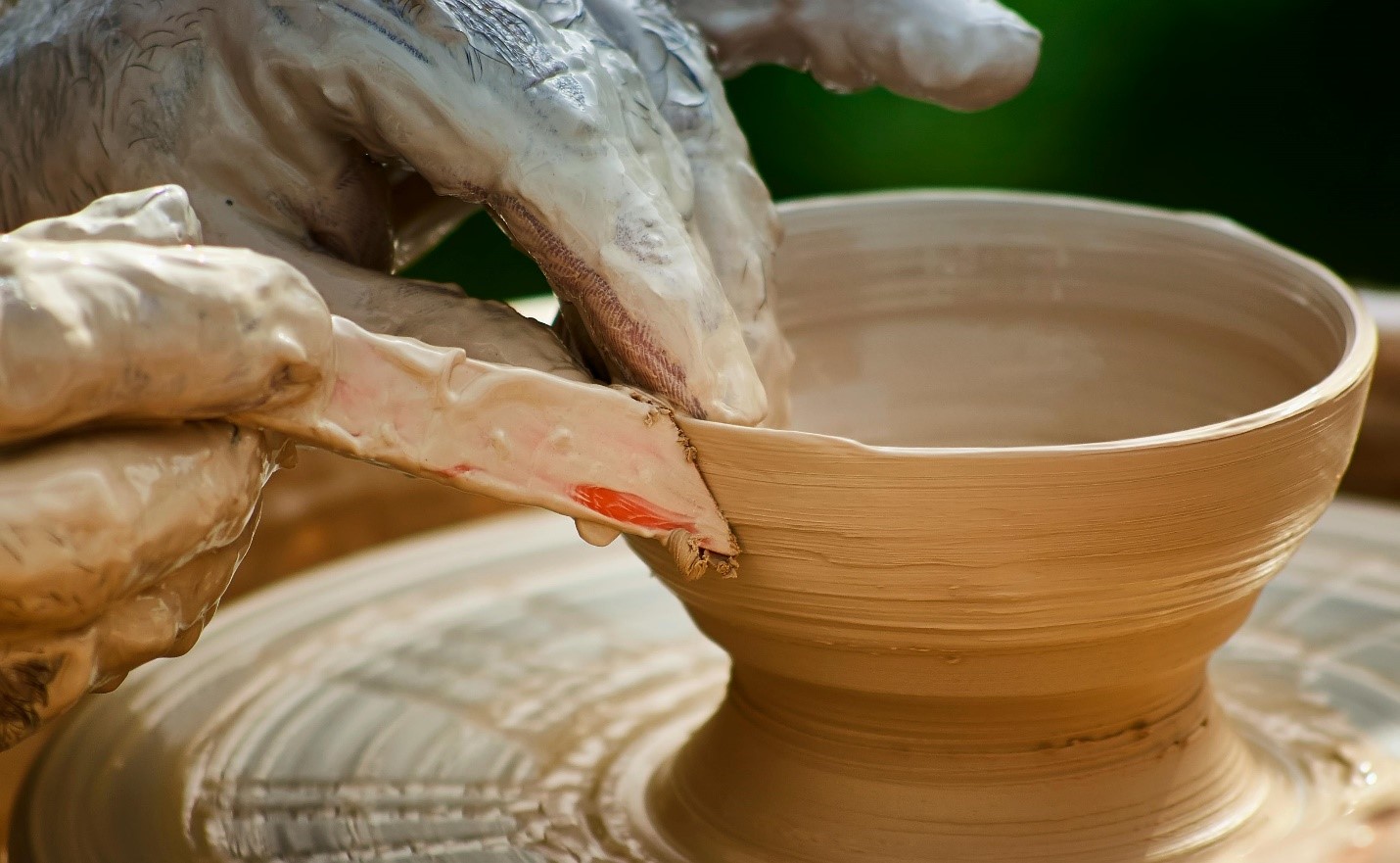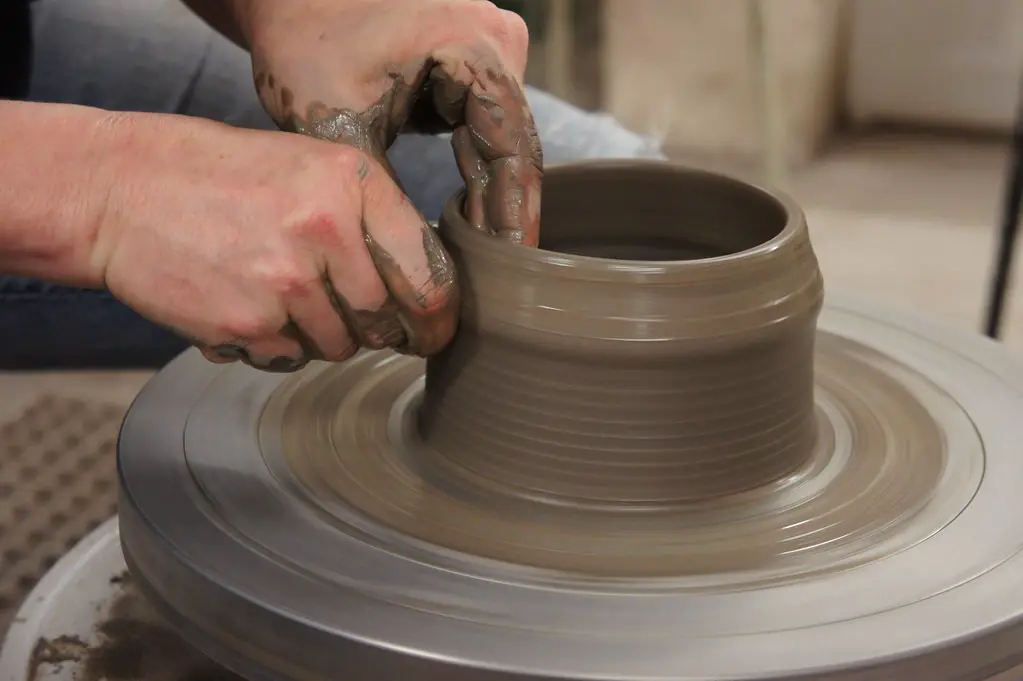Whether the pottery you see around you or make yourself is safe to carry food must have often crossed your mind. Similarly, when you come across unglazed pottery, you may often doubt its capability to hold the food. Some people claim it safe, while some do not entertain such thoughts.
However, you shall be led on by any claims around you, and instead, know that unglazed pottery is NOT safe to store, hold, or cook food in. Even if you take out the average risk of contamination from chemicals and toxins, the threat to your health is not ruled out, and the pottery does not become food-grade.
This article will be about understanding the contaminated nature of unglazed pottery in terms of food storage. Stay hooked until the end to learn how glazing is essential in making pottery safer for food items.
What Does Food-Safe Mean, and How is the Pottery Type Related to it?
Food-safe pottery means there is no risk associated with pot when you use it for food purposes. Most of the time, the harmful chemical of a bowl or pot material comes in the way of good health. These chemicals can either give you instant health problems or ruin your health in the long term if you choose to intake them regularly. And the harmful pottery materials do that without your knowledge.
But food-safe pottery is free from such kinds of dangerous chemicals. The usage of good quality materials makes it food grade so that you can easily use it for eating purposes without worrying about the infusion of toxins in your food. That is precisely why you should take note of the type of pottery you use for storing and eating your food.
Potteries are made from natural materials like clay. Later, however, it contains various chemicals such as lead, color, fire, pollutants, etc. Besides, unglazed pottery is not waterproof and is fragile, making it unsafe to store foods. Also, the clay components tend to break their bonds and mix up with the liquid when the pot comes in contact with it.
On the other hand, if glazed pottery that contains lead is used for food purposes, it can even cause cancer and several other health hazards. Thus, it is essential to know if the pottery material you use for food will harm your health.
What is Unglazed Pottery?
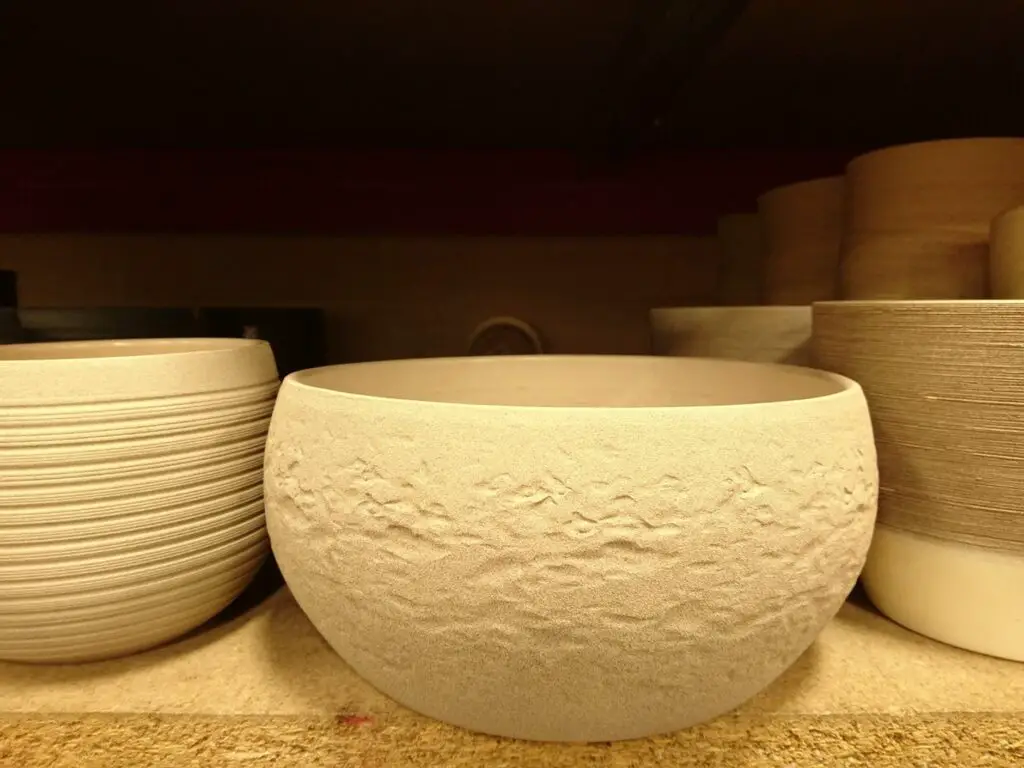
Before jumping onto whether unglazed pottery is food-safe, it’s better to clarify your ideas about what it is. Unglazed pottery or bisque-fired pottery is also known as biscuit pottery, and it refers to ceramic ware that still needs to meet the glazing process. The unglazed pottery can be any form: a bisque-fired clay, an unglazed earthenware, or a terracotta piece.
So now, have a look at the different types of unglazed potteries.
| Unglazed Pottery Type | Specialties |
| Terracotta | These are the kind of baked potteries that come with a reddish appearance. |
| Sgraffito | These unglazed potteries are polished and painted with slips of red and white to create intricate patterns. |
| Polished Pottery | These are deeply incised unglazed pots styled with patterned arabesques. |
These unglazed potteries are porous by nature. They have larger pores on the surface, enough to soak any liquid, making the pots non-waterproof. Moreover, they have a rough texture, unlike glazed pots.
Why are Unglazed Potteries Considered Unsafe in the First Place?
Unglazed pottery does not meet the necessary properties to attribute ceramic ware with the food-safe tag. To better understand why unglazed pottery is unsafe, you need to know precisely how glazing can affect your pot. So, let’s have a look at it.
What Can Glazing Do to Your Pottery?
Pottery meets several changes in quality and texture when it undergoes the glazing process. A proper way of glazing renders many more changes to the pot or ceramic piece, which changes its entire look and character. Here are the effects that glazing can impart on the clay.
- The glazing process forms a coating on the clay, which stays life-long and makes the pot durable. When the pottery is glazed, it gets an application of multiple layers of glazing. The glaze mixture is formed by whisking various components to make it thick. When this thick mix is applied to the pottery body and fired at a high temperature, it creates a protective coating on the pot surface, making the piece durable.
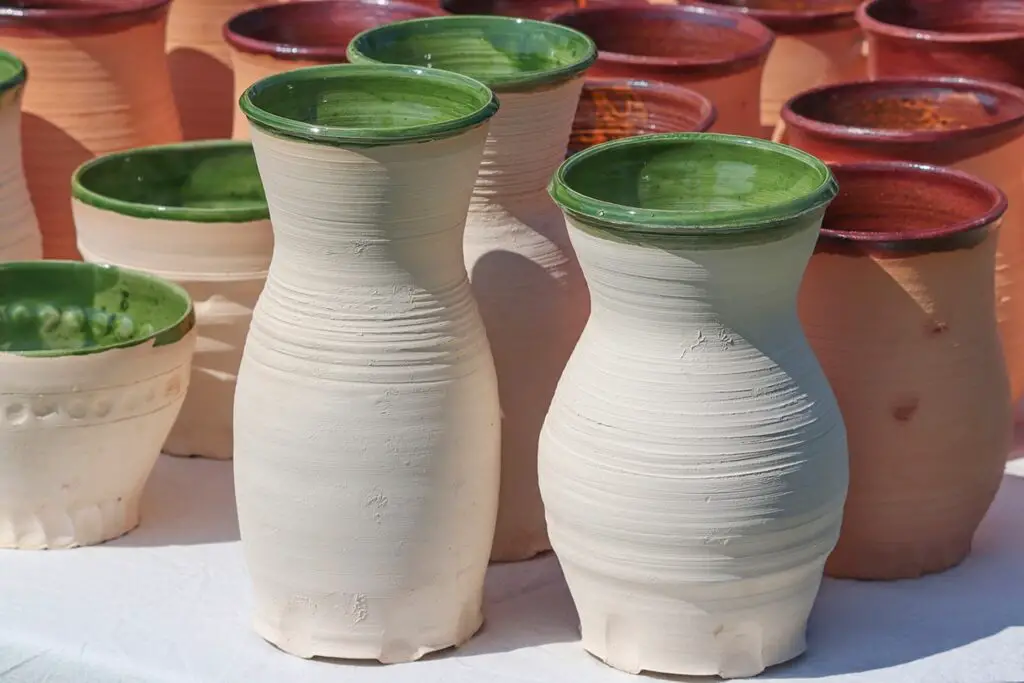
- Glazing seals the pores of the pottery body and makes it waterproof. With the durable coating on the surface, the ceramic pot gets a new life, which further strengthens its texture and locks the porous nature of the pottery so that you can quickly pour in water without worrying about the liquid seeping out.
- The method of glazing makes pottery food safe. It creates a safety film on the ceramic ware, which makes the pottery safe for use in food purposes. However, the glaze must be free from harmful chemicals like lead. Lead-free glazing is perfect for making your ceramic ware food-safe. Mayco Designer Liner Ceramic Glaze Writers can be a good choice in this case.
- Glazing undoubtedly increases the aesthetic value of an ordinary pottery piece. Along with the creative glazing components, fired at a high temperature to make the glazing mix adhere to the surface, this process brings out the ceramic ware’s beautiful texture and color.
- While glazing, the pottery piece gets exposed to the high temperature of the kiln for undergoing the firing process. This long-term high-temperature application changes the ceramic material entirely. It strengthens the bond of the clay and makes the soft, pliable clay body stone-hard, which is durable and not-so-fragile.
What Happens When You Leave Your Pottery Unglazed?
Now that you know how important it is to glaze your earthenware, it will be easier to understand what happens when you leave your pottery unglazed. So, let’s give it a read.
- As said earlier, glazing involves firing at high temperatures, eventually improving the pottery body’s texture and clay bond. However, some rawness may remain in the earthenware if it is not glazed adequately before firing.
- Since unglazed potteries are porous, they make the pieces soak up water or liquid stored in them. Also, because they are not waterproof, the clay body materials get directly exposed to the water or food in the pot, which is unhealthy.
- This not-waterproof body of unglazed pottery is hard to clean or wash. And it tends to make room for bacteria and fungus, which are highly harmful to health if you consume it through your food.
- You cannot apply any dishwasher soap to clean unglazed pottery. A regular water wash is insufficient to clean the bowls or pots you use for food. So, it is undoubtedly dangerous to eat food on unglazed pottery.
- Many potters use artificial colors or paints to decorate earthenware and leave the body unglazed without providing any glazing over the chemical dyes. Paints usually contain a lot of elements, especially lead. So, when you use unglazed pottery made of harmful chemicals, it will undoubtedly impose severe health dangers, which will be enough to make you fall sick. These chemicals also promote long-term health diseases.
In a recent study by the U.S. Food and Drug Administration, experts have expressed concern regarding the safety of unglazed ceramics when people use them for food purposes. Their research involved close monitoring of the pots, which has shown the presence of lead in them.
As per the study, no earthenware that is 100% lead-free exists. So, it is hard to make clay utensils that are entirely non-toxic and risk-free. However, ask the manufacturer about its convenience and safety before opting for the clay.
How Do You Know If Your Pottery is Food-Safe or Not?
Here are a few tips that you can follow to know if your pottery is safe for food purposes or not. So, check out these tactics to know about the character of your pottery piece.
- Always Check for the Labels of the Pottery Clay Provided by the Manufacturer:
Ensure you have gathered adequate information about the clay you use to create the pottery piece. It’s better not to compromise your health. So, checking out the label on the clay package is the first thing you should do. This factor applies to both glazed and unglazed pottery pieces.
- Opt for a Pottery Test:
If you are not ready to trust your shopkeeper or have forgotten to ask for the clay details while buying, merely opt for a test. You can buy a kit for pottery testing on your own or head to a lab to obtain the safety results of your pot. Your unglazed pottery test results may show you a chemical-free result, but that does not mean it’s food-safe. So, be very cautious while analyzing the pottery test report.
- Take Note of the Decorations:
Pottery decorations with paints are popular and practiced by many potters to create a new glaze-free look. But while doing so, one should consider the paint quality used in decorating the unglazed earthenware. Most artificial colorants are formed of hazardous chemicals. So, be well-assured of whether the paint used is food-safe or not.
- Keep a Check on the Firing Process of the Unglazed Pottery:
Unglazed pottery can only be considered food-safe if fired at a super-high temperature. The high enough temperature changes the ceramic ware in significant ways. It makes the texture of the pot as hard as a stone. At the same time, it enhances durability in a maximized way, which makes the pottery waterproof to some extent.
Thus, it’s better to watch out for the firing process. If the pottery is bisque fired at a relatively low temperature, it will undoubtedly not be food safe and tend to release dirt or toxins when you keep food in it.
How Can You Make Unglazed Pottery Food Safe?
There are a few ways that you can apply to make your unglazed pottery food safe to a certain extent. Here’s what you can do.
- Choose the Correct Type of Clay for Making Food-Safe Pottery:
Selecting a suitable clay and firing it at the right temperature can yield a food-safe result.
However, let’s look at the types of clays and their corresponding firing temperatures.
| Clay Type | Cone Temperature |
| Low-fire earthenware clay | Cone 10 |
| High fire stoneware | Cone 10 |
| Porcelain | Cone 5-11 |
| Midrange stoneware | Cone 4-6 |
| Paper clay | Cone 4-10 |
| Low fire earthenware clay | Cone 4-6 |
| Non-firing clay | No firing required |
- Fire the Pot at a Very High Temperature:
You need to upgrade the method of pottery firing if you need to do it correctly. You must cook your clay properly at an extremely high temperature to ensure it is completely waterproof and safe.
Initially, cook the clay body for about 2 hours at a low heat of 200℉. The process should be followed by 2 hours of firing at a medium heat of 300℉. Then, fire it for a few more hours at 300-400℉ in the kiln.
Can You Glaze Your Pottery at Home?
Now that you know that the absence of glaze can pose a concern about the food storage qualities of the pottery, you may also wonder if the pieces you have made or bought can be glazed safely at home. Yes, you can do all kinds of glazing at home, so your pottery is safe for your food. After all, who does not want to eat off of a perfectly aesthetic pottery utensil?
The glazing of pottery can be quite an exciting experience that allows your creative juices to flow freely. You can add color, texture, and a protective finish to your ceramic creation all in one go, that is if you are careful enough.
Glazing a piece in the comfort of your home is quite appealing and enjoyable, but you shall always follow the proper safety precautions to preserve the joy of the experience and your well-being. Here is a detailed method you can use to get started right away!
Materials Needed
- Bisque-Fired Pottery: Make sure your pottery is dry and has been put through bisque firing before you glaze it.
- Glaze: Select the type and color of the glaze as desirable. An array of matte, glossy, and textured finish glazes can be found in the market or online.
- Brushes and Sponges: Various brushes and sponges give you different textures and effects while applying glaze.
- Glazing Tongs or Gloves: Keep your hands from having direct contact with the glaze by wearing gloves and using tongs at all times.
- Buckets and Water: Always have a bucket of clean water to rinse and adjust the glaze consistency.
- Mask and Goggles: Masks protect your inhaling glaze particles and goggles from potential splashes. Wear these throughout the process.
- Ventilated Space: Keep windows and doors open to avoid suffocation as heat builds up.
Step-by-Step Guide
Here are the steps you should follow sequentially to glaze pottery at home and make it food-safe.
1. Prepare Your Workspace:
Find a well-ventilated area to do the glazing. If it is feasible for you, work on it outdoors so you do not have to worry about the airflow. Cover all the exposed surfaces with newspapers, scrap paper, or disposable plastic to avoid spill damage. Keep everything that you need at an organized distance so it is all accessible.
2. Inspect Your Pottery:
Inspect the pottery to be free from dust and debris. Wipe it with a dry cloth or a damp sponge as necessary.
3. Choose and Prepare Your Glaze:
Mix the glaze so it retains a consistent texture. Some glazes may sink, so make sure it is all mixed. Before trying it out on the pottery, test the glaze on a test tile or piece to see how it looks after firing.
4. Application Techniques:
Use the assortment of brushes and sponges to receive various textures and effects. Avoid leaving thick and thin spots; apply the glaze uniformly on the pottery.
5. Protect Yourself:
Ensure you always have a mask on so you do not inhale glaze particles. Also, use goggles to protect your eyes from splashes. If you have sensitive skin, consider wearing gloves throughout the process to avoid contact with the glaze.
6. Drying:
Fire only after the glazed pottery has dried completely. It may take long hours or even a day, depending on the thickness of the clay.
7. Clean Your Tools:
Wash your brushes, sponges, and other tools as soon as you finish work to ensure the glaze does not contaminate them.
8. Firing:
Follow the usual conditions and instructions for firing the glazed pottery as mentioned on the glaze packaging or as told by the supplier.
9. Final Inspection:
After firing, inspect your pottery for the desired finish. Note any issues or successes to inform your future glazing projects.
10. Dispose of Materials Safely:
Dispose of the remaining glaze and the cleaning water per your area’s local environmental regulations.
Remember to follow the instructions precisely and see manufacturer guidance, if any, during the process. Each glaze can come with differing procedures, guidelines, and temperature requirements. It is essential to read the fine print every once in a while. Enjoy this enriching experience and experiment with various techniques to make your pottery much safer for food!
Conclusion:
As we can see from the above discussion, unglazed potteries are unsafe. They are undoubtedly eco-friendly and chemical-free, as they are the by-products of natural clay. But you cannot opt for unglazed bare clay utensils for food purposes. So, make potteries with proper glazing coats. However, there is no reason to rely entirely upon glazed ceramics because if the glaze is not food-safe, it will be more dangerous than the unglazed ones. Hence, be careful while creating pottery pieces for food purposes.
Happy sculpting!

